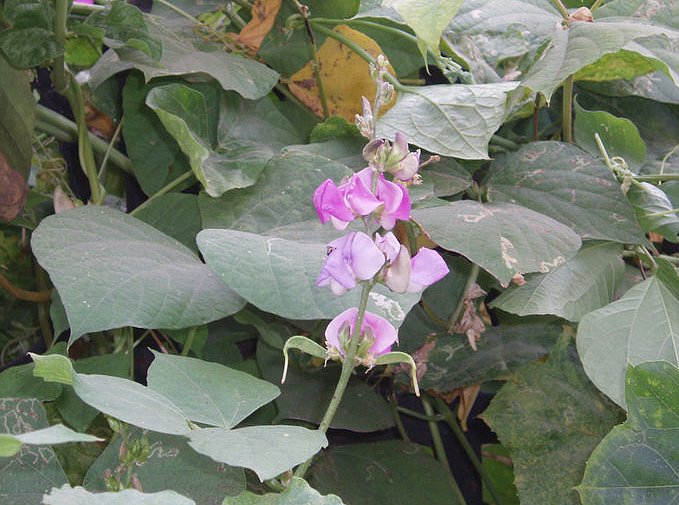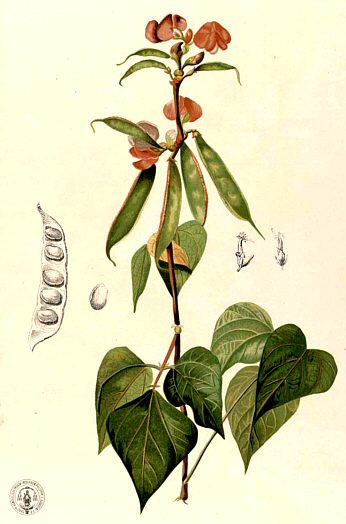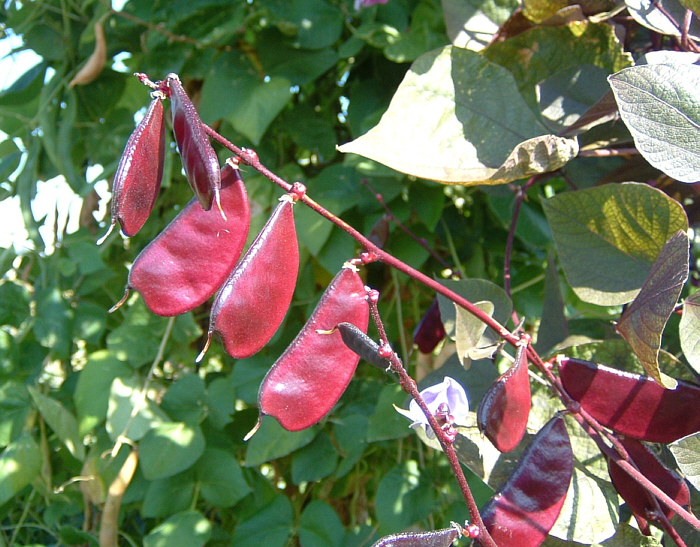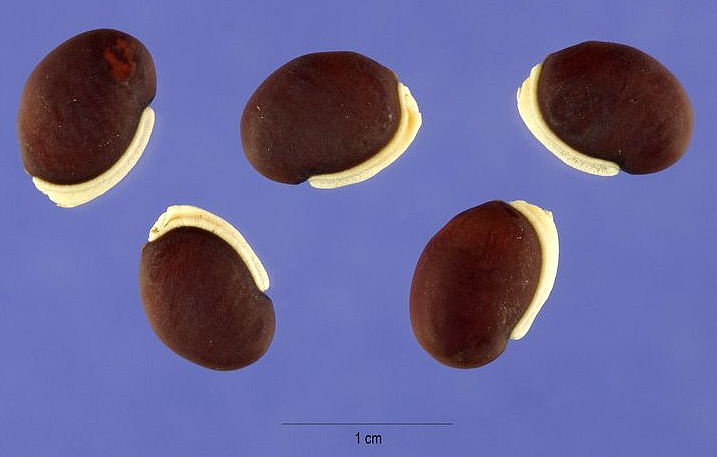

Zitierweise / cite as:
Carakasaṃhitā: Ausgewählte Texte aus der Carakasaṃhitā / übersetzt und erläutert von Alois Payer <1944 - >. -- Anhang A: Pflanzenbeschreibungen. -- Lablab purpureus (L.) Sweet -- Fassung vom 2007-07-12. -- URL: http://www.payer.de/ayurveda/pflanzen/lablab_purpureus.htm
Erstmals publiziert: 2006-07-12
Überarbeitungen:
Anlass: Lehrveranstaltung SS 2007
Dieser Text ist Teil der Abteilung Sanskrit von Tüpfli's Global Village Library
WARNUNG: dies ist der Versuch einer
Übersetzung und Interpretation eines altindischen Textes. Es ist keine
medizinische Anleitung. Vor dem Gebrauch aller hier genannten Heilmittel wird
darum ausdrücklich gewarnt. Nur ein erfahrener, gut ausgebildeter ayurvedischer
Arzt kann Verschreibungen und Behandlungen machen!
Falls Sie die diakritischen Zeichen nicht dargestellt bekommen, installieren Sie eine Schrift mit Diakritika wie z.B. Tahoma.
Verwendete und zitierte Werke siehe: http://www.payer.de/ayurveda/caraka0001.htm
Lablab purpureus (L.) Sweet = L. niger Medik. = Dolichos lablab L. = Lablab lablab (L.) Lyons = Vigna aristata Piper= Lablab vulgaris (L.) Savi

Abb.: Lablab purpureus (L.) Sweet
[Bildquelle: Wikipedia]

Abb.: Lablab purpureus (L.) Sweet
[Bildquelle: Wikipedia]

Abb.: Lablab purpureus (L.) Sweet
[Bildquelle:
bcballard. --
http://www.flickr.com/photos/bcballard/249107165/. -- Zugriff am 2007-07-12.
--
![]() Creative
Commons Lizenz (Namensnennung)]
Creative
Commons Lizenz (Namensnennung)]

Abb.: Samen von Lablab purpureus (L.) Sweet
[Bildquelle: USDA-NRCS PLANTS Database/Wikipedia]
Drury:
"Lablab vulgaris (Savi.) N. O. Leguminosae. Chota-sim, Hind. Bun-shim, Beng. Anapa-anoomooloo, Tel. Avarei, Mutcheh, Tam.
Description.—Twining; leaves pinnately trifoliolate; leaflets entire; racemes axillary, elongated; pedicels short; corolla papilionaceous; calyx bi-bracteolate, campanulate, tubular 4-cleft; legume broadly scimitar-shaped, gibbous below the apex, and ending abruptly in a straight or recurved cuspidate point; seeds longitudinally oval, of various colours; flowers red, purple, or white. Fl. Nov.—Feb.—W. & A. Prod. i. 250. Wight Icon. t. 57-203.—Roxb. Fl. Ind. iii. 305.-Dolichos lablab, Linn.------Peninsula. Bengal. Cultivated.
Economic Uses.—There are several varieties differing in the colour of their seeds and forms of their legumes, some of which are cultivated, and others are not. Of one variety which is cultivated on the Coromandel coast, Roxburgh states that it will yield in a good soil about forty-fold. The seeds bear a low price comparatively, and are much eaten by the poorer classes, particularly when rice is dear. They are not palatable, but are reckoned wholesome substantial food. Cattle are fed with the seeds, and greedily eat the straw. Another variety, which has white flowers, is cultivated in gardens and supported on poles, often forming arbours about the doors of native houses. The pods are eaten but not the seeds. The pulse or the best kind is imported from Madras to Ceylon.—(Roxb.) The different kinds are distinguished by the colours of their flowers, which vary from white to red and purple, and by the sue and shape of the pods, which exhibit every degree of curvature, one kind being designated as the Bagh-nak (tiger's claw), from its rounded form. The same diversity occurring in the seeds has given rise to the many specific varieties, or even species, which after all may well be reduced to the present form of Lablab.—W. Elliott."
[Quelle: Drury, Heber <1819 - 1872>: The useful plants of India : with notices of their chief value in commerce, medicine, and the arts. -- 2d ed. with additions and corrections. London : Allen, 1873. -- xvi, 512 p. ; 22 cm. -- s.v.]